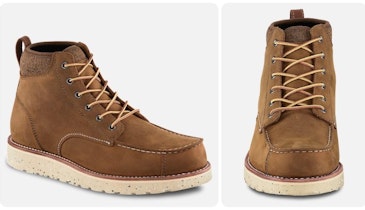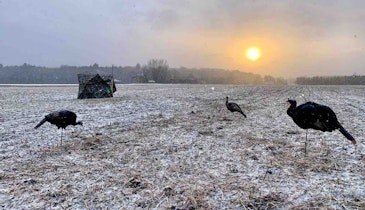I get a lot of emails that go something like this: “I’ve been shooting and hunting with firearms my whole life and have the opportunity to hunt in an area where firearms can’t be used and I think an airgun might be the right option. I have been reading about pre-charged pneumatics (PCPs) and would like to keep my first purchase under $1,300 for gun and tanks. Can you give me some advice on what to buy?” Another version of the question is, “I am a teenager and have not hunted very much, but would like to get started. I have a place loaded with rabbits and squirrels but not much money, what should I buy?”
These questions, though similar, have quite different answers. The crux of the question is: I’m just starting out with airguns, these are my circumstances and I need help deciding which airgun is right for me. To provide the best answer, we need to better understand the need. What is the buyers shooting and hunting experience, is there a reason a certain technology will or will not work for them, how is the gun going to be used and how much do they want to spend?
Previous hunting experience comes into play because you may have already developed preferences with respect to firearms that you’d like to replicate in your airgun. For instance, I always had a bias for compact centerfire and rimfire hunting rifles and carried that preference along when I started looking at air rifles. You might like a certain type of stock, have a preference for one material over another and so on. Much of selecting the right rifle is subjective, and you shouldn’t ignore your hard-won experience when starting up with airguns.
Choice of power-plant may push the potential buyer into less familiar territory related to technology, controls and features that are airgun specific. Platform specificity means deciding if you want a spring-piston rifle or a PCP; and if it’s a springer do you want a conventional-coiled spring or a gas-ram, or if it’s a PCP do want a regulated or unregulated design. Other things that you are familiar with might be different in an airarm; a bolt-action is similar between the two, but where does the sidelever action fit into the equation?
You also need to determine what you’ll be using the gun for. In a common variation of the question above, the new airgunner states he/she wants a rifle for “small game, predators and the occasional hog.” It is hard to find a gun that does it all and impossible to find one that does it all well. My advice is to define the primary applications for the rifle and forget the corner cases. What I mean is that if you will spend 95 percent of your time hunting small game, may shoot a coyote if you see one and have never seen a wild hog but would certainly like to shoot one if presented, forget about the coyote and hog and get the best small-game gun you can find.
On the other hand, if you hunt 70 percent small game and 30 percent predators, get a rifle in a hard-hitting transitional .30 or .35 caliber. This choice would not be ridiculously overpowered for small game, but would be a viable close-range predator gun. You may have to adapt your hunting technique to adjust to the guns capabilities, but this could be a good option for you.
I don’t mind a PCP rifle with a small air reservoir that provides 20 shots per fill for rabbit hunting, because that’s enough for a day in the field, but in target-rich situations, such as hunting prairie dogs, I want a gun with a large air reservoir that permits 70 shots before returning for a refill. The more you are clear on how you will use your new gun, the happier you will end up being with you purchasing decision.
Consideration of cost is more than the price of the gun and is impacted by your technology choice. Spring-piston guns are generally less expensive than a PCP, though there are lower priced PCPs coming to market. However, with a PCP you will need an air source (hand-pump, SCUBA tank, or HPA Tank) which costs from $150 to $700, as well as ongoing costs of filling the tanks. It is worth noting that your overall cost of shooting a springer or PCP is reduced, even compared to a rimfire.
Another important question is where you should purchase your new gun. If you buy from a big-box store, you will be limited in selection. The guns will be almost entirely springer technology and you will have to do your homework to find a gun you’ll want to continue shooting over time. If I can give you one word of advice on buying a springer, don’t make your decision based on the velocity information printed on the box. I liken it to gas mileage listed on the window sticker when buying a new car — useful in a general way, subject to many variables and perhaps a bit optimistic. Of all the parameters discussed, I think the velocity on its own is a less-important criteria.
The other option is to use the many specialty airgun shops online. In most jurisdictions you can place an order and have a new gun delivered to your doorstep within a week. These shops provide a selection of the best guns from around the world, all technology platforms will be represented, with an array of calibers, and people that really know what they are talking about to help you. The negative is you don’t get to handle the gun before you buy, though it has been my experience that these companies will work with you to get it right.
My intention is not to tell you which gun to buy but to provide a few suggestions on things to consider. Let me close with words of advice gained through experience; buy a gun you’ll continue to use and pick it as though it’s your last airgun, not your first. Select quality of build over fancy features, steer away from specialty guns or really extreme designs (they’re fun but not for your first air rifle), be realistic and pick a gun that will address your most frequent use case. Lastly, make sure your expectations are realistic; don’t expect buy a budget-priced springer and print sub-½-inch groups at 50 yards. Like winning the lottery, it’s possible but not likely.
To put these guidelines into practice, let me suggest a few guns that I would recommend and reasons why. Two springers I like are the Walther LGV and the Diana N-TEC. They cost a bit more than many others, but you can shoot these rifles for years and not outgrow them. They’re accurate and appropriate small-game power, and both of these rifles offer a smooth and consistent firing cycle. For budget PCPs, I’d suggest you look at the Hatsan AT-44, Gamo Coyote and Benjamin Marauder as moderately priced rifles that deliver performance and features above their paygrade. Also worth looking at is Benjamin’s new Maximus, which is an entry-level PCP configured to perform at low pressure with an MSRP under $200.00. If you want a premium PCP rifle that might be the only airgun you’ll ever need to buy. The Brocock Compatto is a new rifle out of the UK that is accurate, powerful, smooth cycling, has a great trigger, is quiet and provides a high-shot count. Also worth consideration is the FX Wildcat, which in this era of bullpups stands above the crowd. Accurate, powerful, a great trigger (not easy in a bullpup), the side lever has been moved forward allowing the action to be worked without breaking the cheek weld, this is a bullpup that shoots like a full-size rifle.
To be fair there are so many great guns on the market, I could fill a book. My intention is to provide you with some important points to consider along with real-world examples of what I look for in my hunting guns. Do your homework and find a knowledgeable retailer with a broad product portfolio to help you decide.






